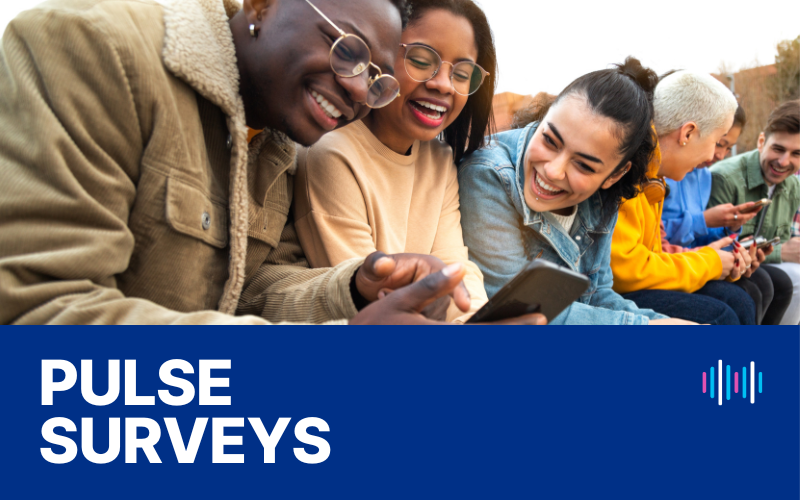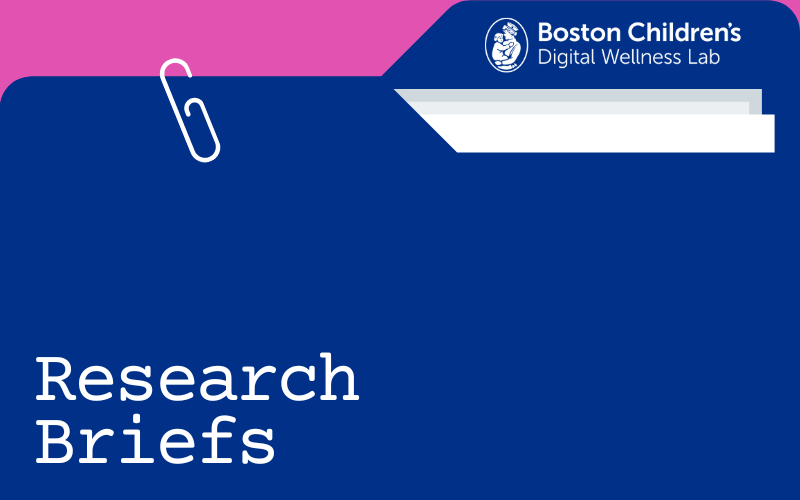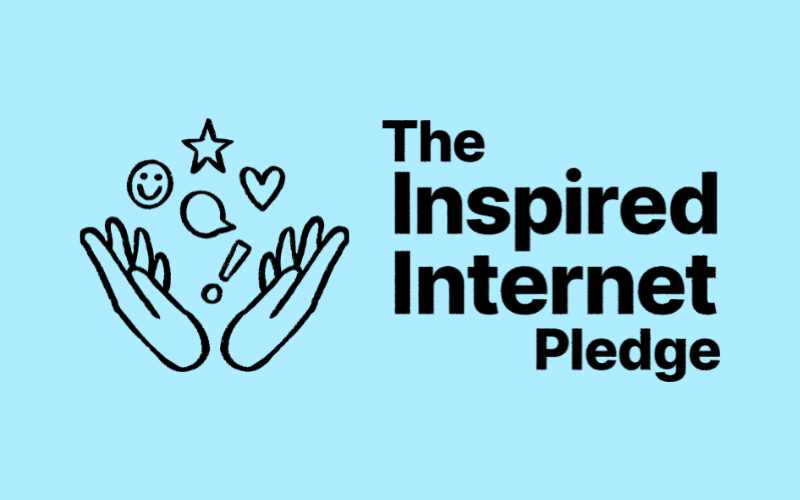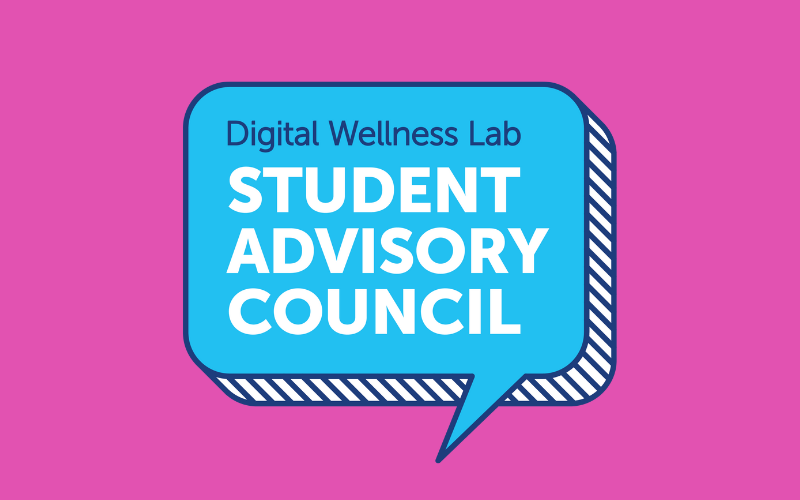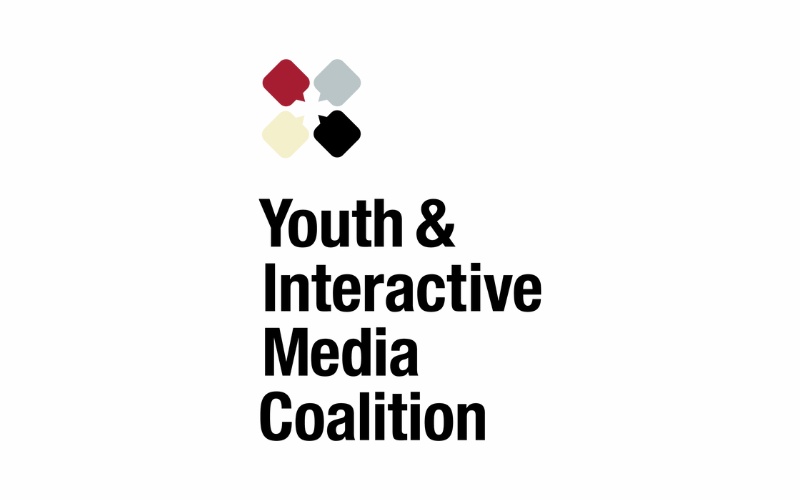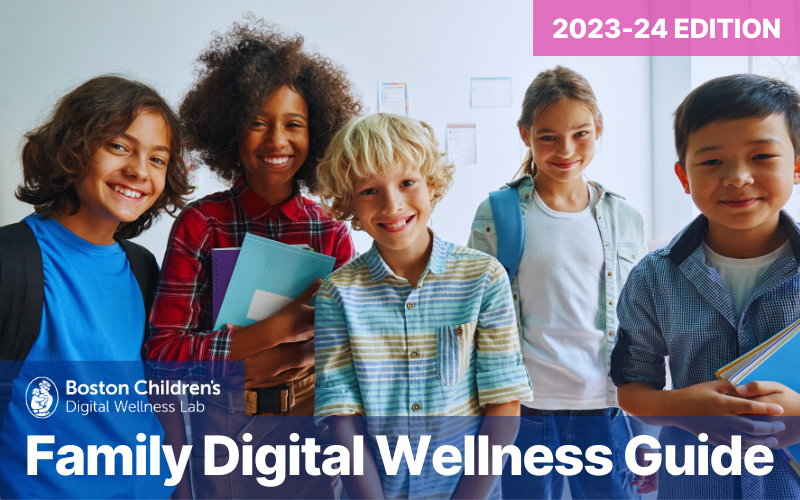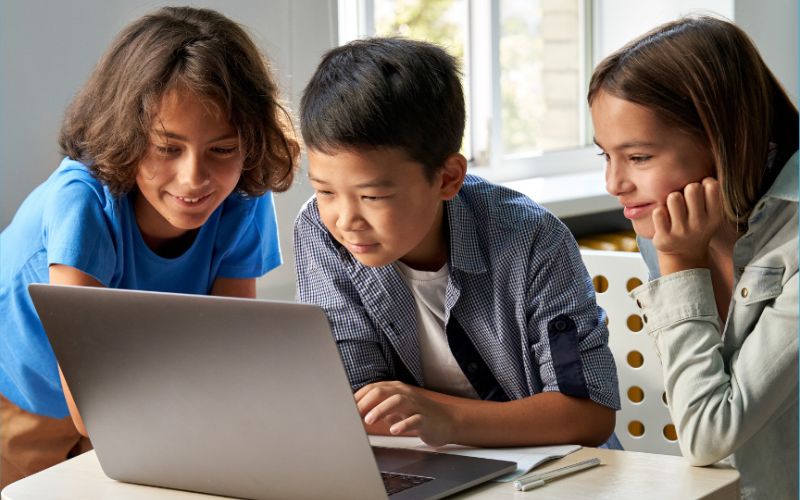Sharpened pencils and cool first-day outfits have always been part of the back-to-school fun, but for today’s kids, things aren’t as analog as they used to be. The COVID-19 pandemic dramatically affected how students attend school, and those effects linger even as most students return to school full-time and in-person.
Schools are accelerating the integration of technology into assignments and classrooms, making it challenging for both caregivers and kids to keep track of everything from school-issued devices to new learning apps, all while learning how to communicate digitally with teachers, other caregivers, and friends. We designed this guide to help you better support and manage your child’s relationship with technology and create a healthy learning environment and good tech habits along the way.
Technology for learning
Research from Education Week found a dramatic increase in the number of school districts providing devices directly to individual students. In fact, the number of districts with one student per device in high school and middle school increased from ~65% pre-pandemic to 90% in 2022. In elementary school, the change was even more dramatic with a 100% increase in the same time period. Of course, this increase in one-on-one access means your child will likely be using a device for online assignments and homework, something that will not come as a surprise to most caregivers.
Research has shown that while these changes are new, many students have positive views about using technology in their learning and feel like it adds to their understanding of the material or helps them to access more digital resources. Digital tools in the classroom have also been shown to provide opportunities for students to increase their digital social skills outside of school use.
While edtech can provide students with learning opportunities delivered in a format they know well, it can also present some of the same challenges as the technologies kids and teens use during their non-school hours. This makes it important for caregivers to help young people balance and manage their device use both in and out of school.
The importance of self-regulation
Self-regulation refers to our ability to control our behavior and manage thoughts and emotions in appropriate ways. It’s important to help children develop self-regulation skills so they learn how to handle conflicts, stress, and take care of their overall well-being as they grow up. In this tech-heavy environment, research suggests that students’ use of digital tools may result in lower ability to self-regulate. The very features of the technology they use — instant gratification, immediate feedback, distractions at the click of a button — can inhibit self-regulation. There are four main categories of self-regulation that are important to understand and foster in kids:.
Physical: Physical self-regulation helps kids control impulses to lash out physically in anger or frustration.
Emotional: Emotional self-regulation helps kids calm down intense feelings and control emotions so they aren’t overwhelming.
Mental: Mental self-regulation helps kids concentrate and develop the discipline necessary to learn and perform tasks.
Social: Social self-regulation helps kids form strong relationships by not letting strong impulses or emotions control our behavior.
Here are some tips to help children develop better self-regulation to set them up for success in school and beyond.
Limit distractions and multitasking
Media multitasking (texting while in class, for example) is tempting but can have negative consequences for academic performance. Talk to your child about how media multitasking and other distractions can interfere with their ability to learn. You can help them stay focused and retain what they’re learning by working with them to create agreements for study environments. Keep in mind:.
- Your child may need to use digital media or technology to complete their homework, but make sure other distractions are put away.
- If they have a cell phone, remind them to put it on silent and keep it in another room while studying.
- Using techniques like a focus timer can help them concentrate on the task at hand and develop stronger mental self-regulation.
By giving them the information and tools they need to keep themselves focused, you’ll empower them to develop lifelong discipline and tech boundaries. (But don’t forget to check in with them to see whether they need additional support.)
Set up routines
Routines are essential processing shortcuts for our brains that help us establish good habits. They help relieve stress, improve time management, and make tasks easier and more consistent. Establishing a daily routine is important for everyone, not just young children. Whatever your child’s age, help them create a routine for each section of their day (morning, afternoon, and evening), including how they plan to use technology throughout. A healthy, balanced routine can help your child improve their study habits and commit to specific goals. For example, if you establish a nighttime routine where tech is turned off or put away between 8 PM – 7 AM, you’ll help them improve their sleep now and in the future.
Learn with your child
As your child starts using more technology for school, teachers might take advantage of digital tools to keep caregivers “in the loop.” Be sure to ask teachers what tools they’re using for the year, like Class Dojo, Google Classroom, Talking Points, or other tech tools, so that you can get comfortable with them and ensure you get all the updates on your young scholar!
Some of the digital media your child uses in the classroom or school might also provide great learning opportunities at home. For example, the popular game Minecraft has an Education Edition and has been used successfully to represent biomes, support mathematical learning, and engage students in collaboration. Interestingly,we know that co-playing video games can have many benefits; the more families play together, the closer they feel. Co-playing can also help support parent-child relationships and act as a coping tool. Ask your child to share the technology they are using in the classroom; who knows, you might even become a Minecraft or coding expert along the way!
In addition to learning together, sit down and discuss the importance of not giving in to the temptation to look up answers on the internet or using AI. Research shows that looking up answers may not negatively affect homework or in-class grades, but may result in lower test scores because kids are not retaining information. It’s essential to encourage academic independence and integrity from an early age to instill strong study habits for college and beyond.
Media use agreement
It’s not uncommon for elementary schools to offer a device for schoolwork. So, it’s critical to discuss with your child how they will use technology during the school year and how it might be different from their summer use.
Revisiting or creating a new media use agreement for your family can help set boundaries and expectations for how kids (and caregivers!) should use technology both in the classroom and at home. This includes things like keeping phones and tablets in another room while sleeping, daily and weekly screentime limits, appropriate content, and more.
The growth of AI in schools
With the release of new generative AI tools like Chat-GPT and personal AI in social media, there has been increased focus on both the opportunities and challenges this may present to students, teachers, and caregivers. Many teens and young adults are aware of and using AI, but it is not consistently used. New surveys show that while 51% of young people ages 14-22 have used generative AI, only 4% report using these tools almost daily or everyday. When it comes to school-specific use, despite concerns that students may turn to AI to generate full essays, this is likely not as prevalent as some fear, and over half of students familiar with Chat-GPT believe it is unacceptable to use it to write essays. With this in mind, it is still extremely important to discuss how AI could and should be used within an educational context, and to become familiar with any district, school, or teachers’ specific AI rules so your child can use this technology in constructive ways that support, rather than hinder, their learning.
Generative AI may also pose some risks in school outside of classwork, with increased concern over the dissemination of AI-generated sexual images. While we are learning more about this every day — and how we can prevent it from happening — it is important to talk to your child about how images like these, even when considered a joke, can have consequences and ramifications.
Additional Resources
The great thing about digital media is that it can put the world at our fingertips and provides learning opportunities in any setting. But, if you’re looking to create learning opportunities for your children outside of school, sometimes the number of “educational” apps and websites can be overwhelming.
Unfortunately, not every resource labeled as educational lives up to its promise, so evaluating what your child is using is important. Good news! There are many resources that can help you evaluate and choose digital media for your children. Here are a few of our favorites:
- 20 Apps for Kids Who Think Reading Is Boring | Common Sense Media
- Best Math Games, Websites, and Apps for Kids | Common Sense Media
- 18 Apps to Help Kids Stay Focused | Common Sense Media
- Digital Play for Global Citizens
All information included in this article is for educational purposes only. For specific medical advice, diagnoses, and treatment, consult your healthcare provider.

